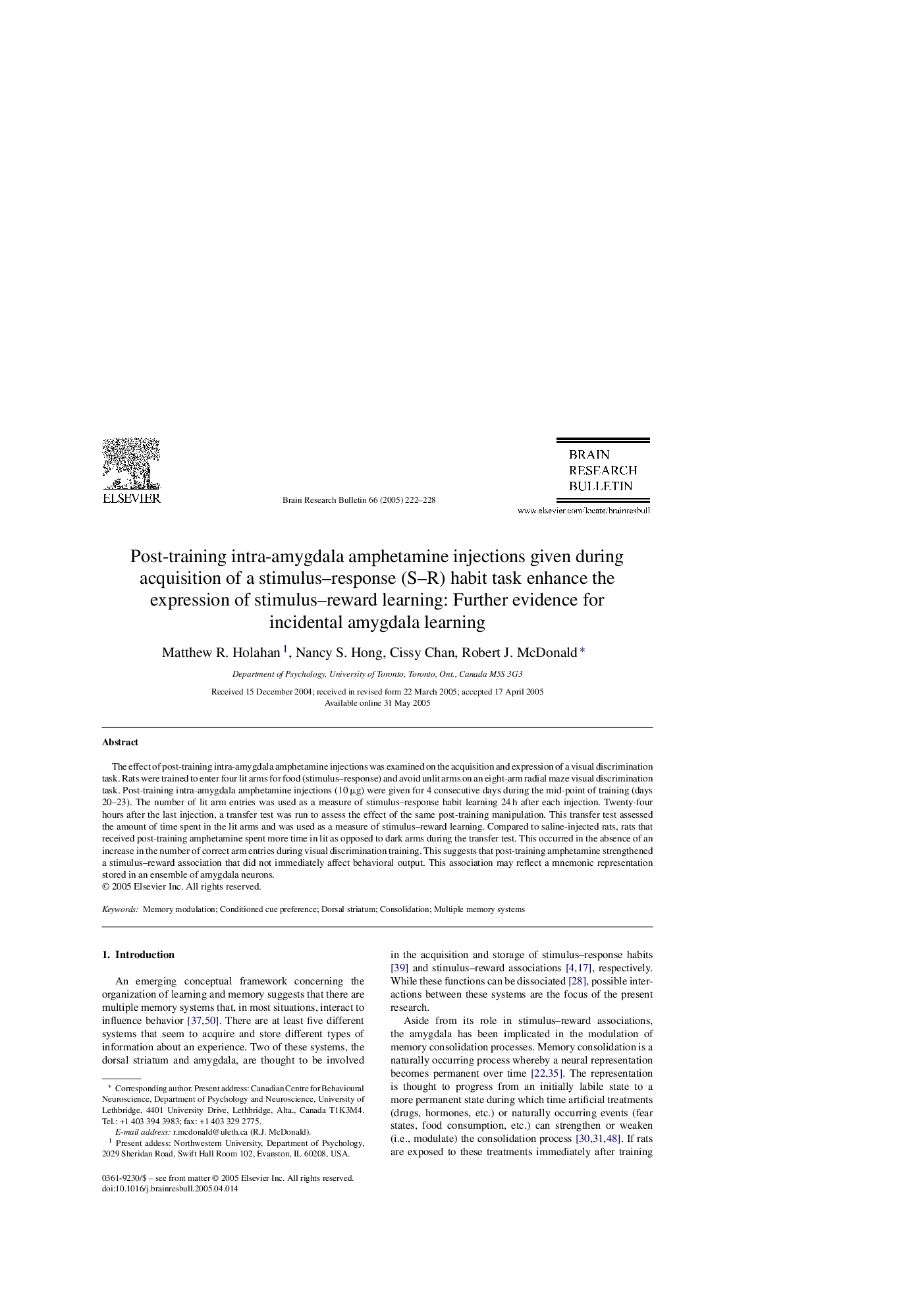| Article ID | Journal | Published Year | Pages | File Type |
|---|---|---|---|---|
| 9409514 | Brain Research Bulletin | 2005 | 7 Pages |
Abstract
The effect of post-training intra-amygdala amphetamine injections was examined on the acquisition and expression of a visual discrimination task. Rats were trained to enter four lit arms for food (stimulus-response) and avoid unlit arms on an eight-arm radial maze visual discrimination task. Post-training intra-amygdala amphetamine injections (10 μg) were given for 4 consecutive days during the mid-point of training (days 20-23). The number of lit arm entries was used as a measure of stimulus-response habit learning 24 h after each injection. Twenty-four hours after the last injection, a transfer test was run to assess the effect of the same post-training manipulation. This transfer test assessed the amount of time spent in the lit arms and was used as a measure of stimulus-reward learning. Compared to saline-injected rats, rats that received post-training amphetamine spent more time in lit as opposed to dark arms during the transfer test. This occurred in the absence of an increase in the number of correct arm entries during visual discrimination training. This suggests that post-training amphetamine strengthened a stimulus-reward association that did not immediately affect behavioral output. This association may reflect a mnemonic representation stored in an ensemble of amygdala neurons.
Keywords
Related Topics
Life Sciences
Neuroscience
Cellular and Molecular Neuroscience
Authors
Matthew R. Holahan, Nancy S. Hong, Cissy Chan, Robert J. McDonald,
